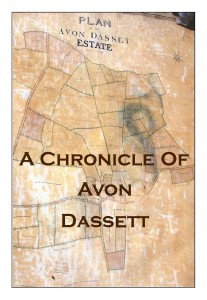NEWSLETTER 3rd September 2018
Forthcoming K&DLHG event 21st September, 7.330 Village Hall. Our first evening meeting after the summer visits will continue the theme of “outings”, with Andrew Baxter celebrating the Edgehill Tearooms. He actually lives on the site of one of the tearooms, and has carried out extensive research into the history, development and activities centred on the many establishments which sprang up around Sanderson Miller’s 18th century tower (now the Castle Inn). The tearooms and the adjacent woods were favourite targets for groups and individuals enjoying a rural break from urban routines. Very little physical evidence now remains of this once-thriving venue for charabancs, walkers and cycling clubs, although the keen-eyed can still spot the faded painted sign on the stone gatepost at the entrance to one venue. This contemporary postcard of the same establishment shows the Edwardian-period view from just about where Andrew’s house now stands. Those who have heard Andrew talk before on subjects as diverse as Roman engineering and the battle of Edgehill, USA, will know and appreciate his informative illustrations and his relaxed, enthusiastic delivery.
Report on the 11th August coach visit to the Bristol Docks and Brunel’s SS Great Britain.
After many weeks of hot dry weather our coach set off promptly from St Peter’s westwards into the forecast of rain later. A slight hold-up on the approach to Bristol hardly delayed our arrival at the SS Great Britain. As a native Bristolian I remember the return of the rusting hulk from the Falklands in 1970 to the very dry dock where it was built in 1843. The young Victoria had been 6 years on the throne when her new husband Albert attended the launch. It was not a dramatic slipway launch, the SS GB was hauled gently out of the dock into the Floating Harbour for fitting-out. Our first view was of her rear end, but what an elegant rear end, beautifully shaped and gilded, the huge iron ship apparently floating on placid water. 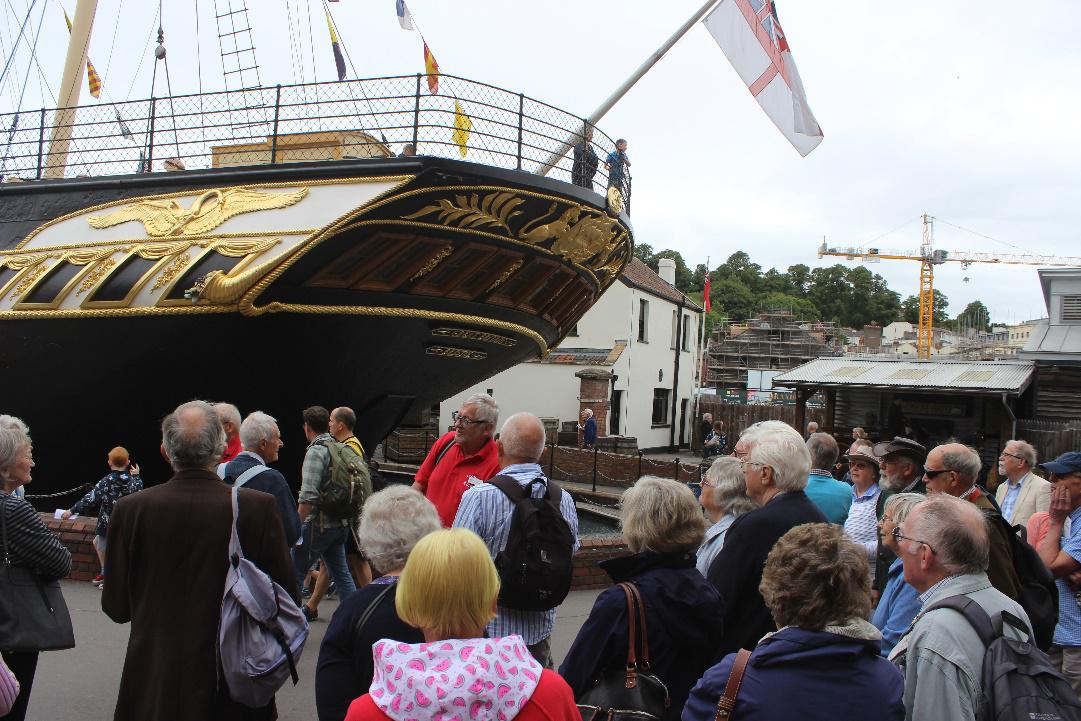 This was a clever illusion, and we were able to walk down under the shimmering surface to admire her splendid bottom. The guides had given us a brief history, explaining that the interior was reconstructed to reflect two of the main episodes of her chequered career, the stern half reproducing the brief luxury of its intended purpose as an ocean liner on the transatlantic route, and the forward
This was a clever illusion, and we were able to walk down under the shimmering surface to admire her splendid bottom. The guides had given us a brief history, explaining that the interior was reconstructed to reflect two of the main episodes of her chequered career, the stern half reproducing the brief luxury of its intended purpose as an ocean liner on the transatlantic route, and the forward 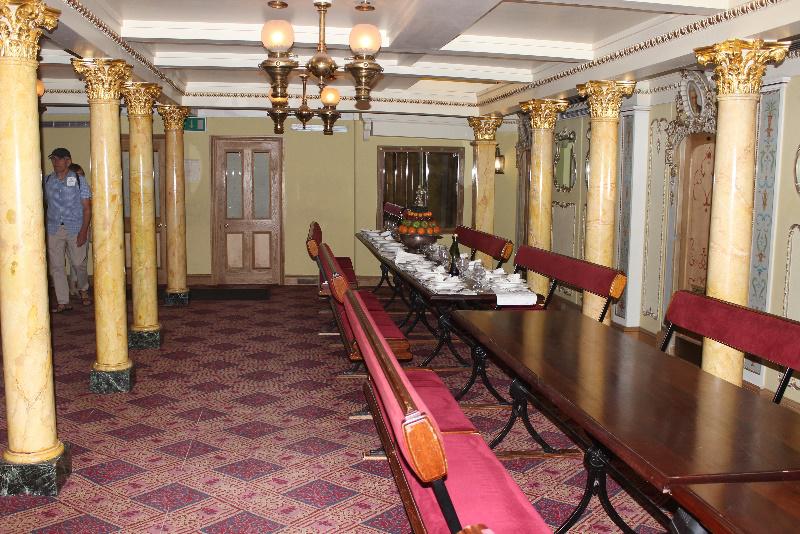 areas giving an insight into its subsequent use as a migrant ship taking hopeful gold prospectors and emigrants to Australia.
areas giving an insight into its subsequent use as a migrant ship taking hopeful gold prospectors and emigrants to Australia.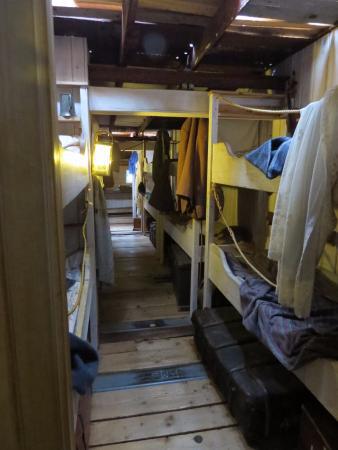 The contrast was obvious, a stark difference between the original accommodation for less than 200 transatlantic passengers and the later modifications to house 600-plus emigrants. There remained a class distinction however, as a white line marked the limit of 2nd and 3rd class passengers’ access to the aft deck above the 1st class saloon.
The contrast was obvious, a stark difference between the original accommodation for less than 200 transatlantic passengers and the later modifications to house 600-plus emigrants. There remained a class distinction however, as a white line marked the limit of 2nd and 3rd class passengers’ access to the aft deck above the 1st class saloon.
The reconstructed engine which powered the propeller is vast, one of the many innovations in Brunel’s design.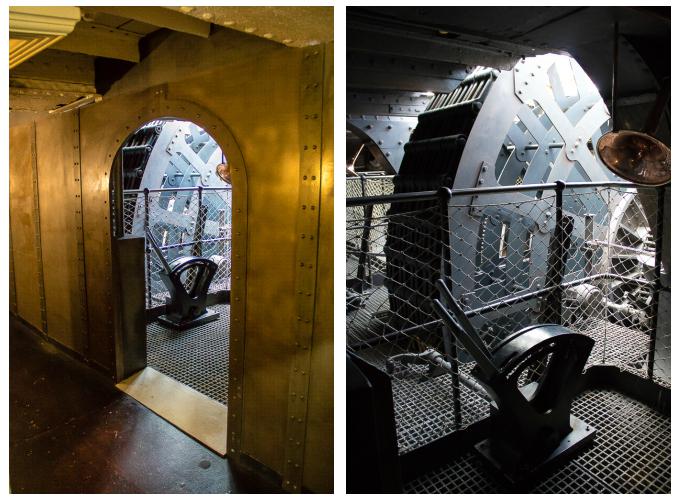
In the adjacent museum, displayed among the many objects from the ship, were letters and documents written by passengers and crew describing their experiences. I enjoyed the sight of racks and racks of meticulously labelled artefacts from the ship. A separate museum was devoted to Brunel and his works, not least the GWR and the iconic Clifton Suspension Bridge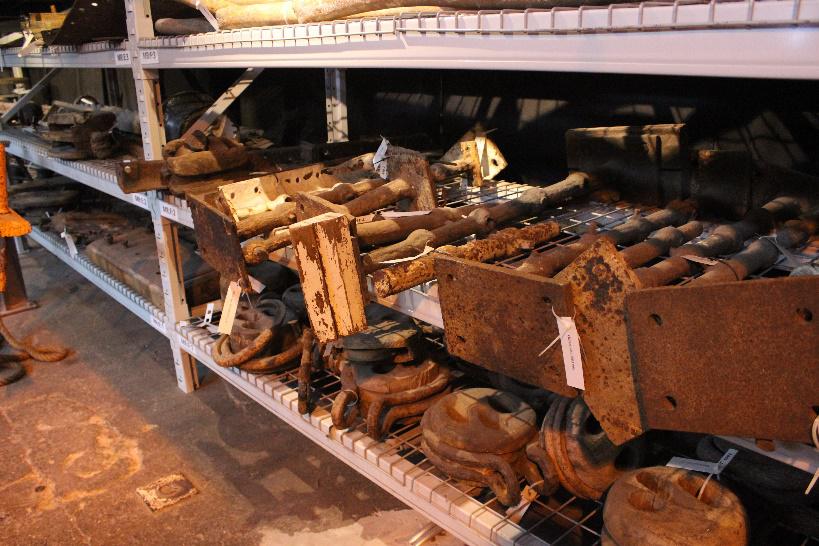
The ship and its two museums and a café provided plenty to see and do, but there was just time to walk along the redundant dock railway tracks to the M-Shed, passing preserved examples of historic cranes and rolling stock. The M-Shed is an outpost of Bristol Museum. It houses a very engaging presentation of Bristol’s history, not shying away from the slave trade which provided much of the city’s wealth and its current multicultural character. There was also café and a temporary exhibition celebrating Bristol personalities, including Banksy, and the historic Bristol (pop) music scene. A lively venue in which we could have spent more time.
But the first rain for many weeks began as we wended our way o’er the tracks back to the coach and home, impressed not only by the magnificent SS GB but also by the skill and dedication of the many people involved in its rescue, conservation and presentation. Our thanks to Isobel for arranging the excursion
September is a busy month for local history, here are some forthcoming events ——
The Kineton Evergreens’ next meeting in the Village Hall at 2.30pm on the 13th September features
Richard Westcott who will describe his experiences and demonstrate some of his costumes as a Pantomime Dame – Oh no he won’t ! – etc. etc.
“ Confessions of a Pantomime Dame”
Step behind the scenes and into the Dame’s Dressing Room
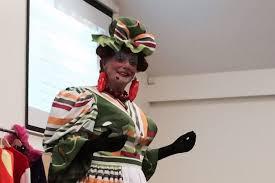 where you can watch Richard Westcott transform himself from Dapper Gentleman to Dame Matilda
where you can watch Richard Westcott transform himself from Dapper Gentleman to Dame Matilda
Discover all the Trials, Tribulations, Fun and Frocks of Life.
Tea and cakes served after the performance
Admission Free
Other Local Heritage Events
Heritage Open Days –
Chesterton Windmill Saturday 8th and Sunday 9th September 10.30am – 4.30pm, last entry 3.30pm
A unique chance to look at Chesterton Windmill, a local landmark that was built between 1632 and 1633. Subject to weather conditions. First come, first-served basis. Small charge for parking. FREE event, no need to book, donations welcome.
Thurs 6th -Sun 9th Sept: South Lodge, Leamington: Leamington History Group local history displays
Warwick Museum– Behind the Scenes – Museum Store Montague Road Warwick
13th September, Archaeology Tours at 10am and 11.30am
Friday 14th September, Costume Tours at 10am and 11.30am
Learn more about our collections behind the scenes at our Museum Stores and find out how we care for and store these fascinating items. On Thursday join us for a look at our archaeology collections and on Friday see some of the historical costumes in the collection. FREE, donations welcomed.
Hands on Warwickshire – Meet the Volunteers Market Hall Museum Warwick–
Saturday 15th September 10am – 3pm
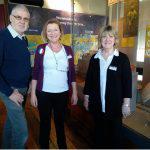 Meet our wonderful team of volunteers and let them share with you some of their favourite items from our collections. Drop-in throughout the day to handle the objects, explore the museum and find out about volunteering at the Market Hall Museum. FREE event, no need to book, donations welcomed. Suitable for all ages.
Meet our wonderful team of volunteers and let them share with you some of their favourite items from our collections. Drop-in throughout the day to handle the objects, explore the museum and find out about volunteering at the Market Hall Museum. FREE event, no need to book, donations welcomed. Suitable for all ages.
Behind the Scenes – Archives Warwickshire County Record Office
Saturday 15th September, Tours at 2.30pm and 3.30pm
Find out how we care for Warwickshire’s precious documents at the County Record Office and go behind the scenes to visit our strong rooms. FREE donations welcome.
Selina Cooper: Working Class Suffragist Market Hall Museum – Monday 17th September – Talk 2pm – 3pm, Museum closes at 4pm. 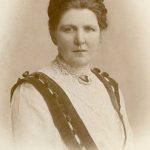 Family historian Jennifer Cranfield talks about her great aunt, who was one of the few women suffragists who spoke on a national platform. £7.50
Family historian Jennifer Cranfield talks about her great aunt, who was one of the few women suffragists who spoke on a national platform. £7.50
Other Societies’ events
Leamington History Group 22nd September:Local History Day at  the Parish Church: launch of “Royal Leamington Spa, a History in 100 Buildings”, all day.
the Parish Church: launch of “Royal Leamington Spa, a History in 100 Buildings”, all day.
24th September 7.30, Dormer Conference Centre, Dormer Place. Leamington Spa: Tara Morton: Mapping Women’s Suffrage. Tara presents her research into the suffragists and suffragettes of Leamington, including Mary Dormer Harris and Mary Louise Vellacott.
The Southam Heritage Collection
Sept 4th , then Tues Fri and Sat until Tues Nov 20th, 10.00am -12.00 Tithe place, High Street ,Southam.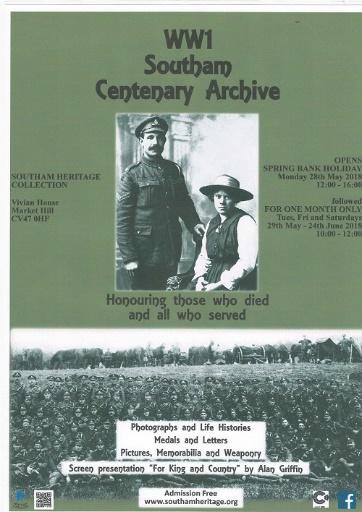
Lighthorne History Society
Friday 7th September, 7.30 pm, Lighthorne Village Hall “The History of Walton Hall and its Scandal” by Elizabeth, Lady Hamilton. In 1866, Sir Charles Mordaunt brought his young bride, Harriet Moncreiffe, back to his Warwickshire mansion, Walton Hall. She was part of the Prince of Wales’ infamous set, and when she had a baby there were several contenders for fatherhood. The ensuing trial, involving the Prince himself, was a scandal. Lady Hamilton of Walton Hall, President of the Warwicks. Local History Soc., has written a book on the scandal. Her talk is sure to be entertaining.
KDLHG Committee Matters.
There has been no committee meeting since the last newsletter.
The next KDLHG Committee Meeting is on Monday the 10th September 2018
DF 3.09. 2018
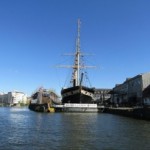
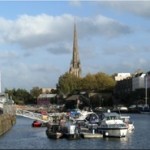
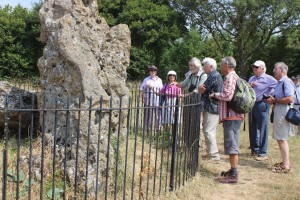
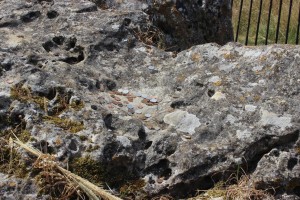
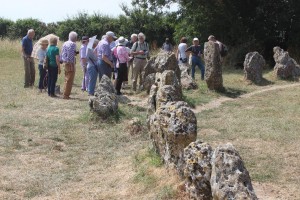
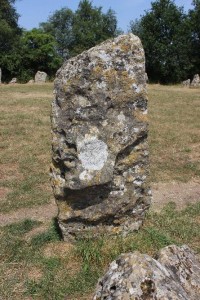
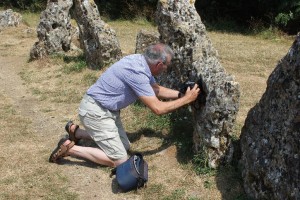
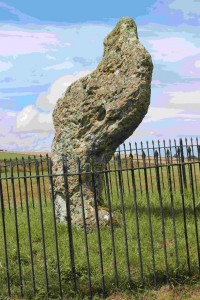 trying something new for this outing, with a lunchtime picnic and guided tour of the Rollright Stones. Meet at the Stones layby at 12.00 noon. Our guide will be David Shirt, Chairman of the Trustees of the Rollright Stones. No refreshments are provided, but you may like to bring a picnic, or Wyatts Farm Shop and café is about a mile or so away. The tour charge is £2.50 per person.
trying something new for this outing, with a lunchtime picnic and guided tour of the Rollright Stones. Meet at the Stones layby at 12.00 noon. Our guide will be David Shirt, Chairman of the Trustees of the Rollright Stones. No refreshments are provided, but you may like to bring a picnic, or Wyatts Farm Shop and café is about a mile or so away. The tour charge is £2.50 per person.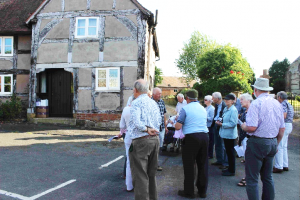 We moved off to encounter what seemed to be a disappointment at the locked church (of which more later), and then walked on to see the large and striking timber-framed house that everybody sees from the Southam road. We learned that it was once a coaching inn, and we thought we could see the filled-in archway to the yard behind, now occupied by a later bay window. The ostentatious timbering at the front is not carried on around the not-so-visible side away from the village green. It later belonged to the Sitwell family but was not their primary residence.
We moved off to encounter what seemed to be a disappointment at the locked church (of which more later), and then walked on to see the large and striking timber-framed house that everybody sees from the Southam road. We learned that it was once a coaching inn, and we thought we could see the filled-in archway to the yard behind, now occupied by a later bay window. The ostentatious timbering at the front is not carried on around the not-so-visible side away from the village green. It later belonged to the Sitwell family but was not their primary residence.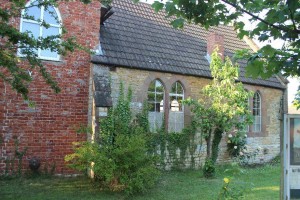 We wandered back toward the village centre, passing the Co-op (the third incarnation on the same site), the Green Man pub, several fine timber-framed cottages, and the Old School. Behind the church is the Manor Farm where our guide was brought up. It was our last scheduled stop but as we arrived back at the church we noticed activity around the previously locked church door, and we gate-crashed the helpers setting up for the next Sunday’s “Messy Church” service. The helpers were surprised but most welcoming, and some chairs were soon occupied by some of our party. The church is large and very light and airy, and the medieval masons had thoughtfully provided two watchers at a trip hazard they’d made.
We wandered back toward the village centre, passing the Co-op (the third incarnation on the same site), the Green Man pub, several fine timber-framed cottages, and the Old School. Behind the church is the Manor Farm where our guide was brought up. It was our last scheduled stop but as we arrived back at the church we noticed activity around the previously locked church door, and we gate-crashed the helpers setting up for the next Sunday’s “Messy Church” service. The helpers were surprised but most welcoming, and some chairs were soon occupied by some of our party. The church is large and very light and airy, and the medieval masons had thoughtfully provided two watchers at a trip hazard they’d made.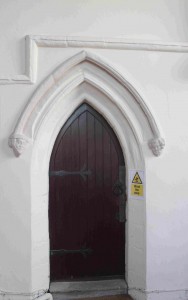
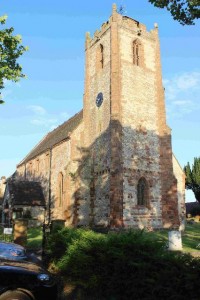 Medieval CCTV? The imposing tower, minus its steeple
Medieval CCTV? The imposing tower, minus its steeple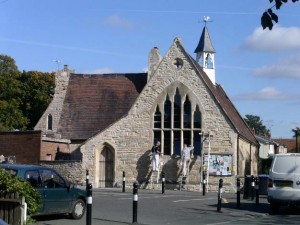
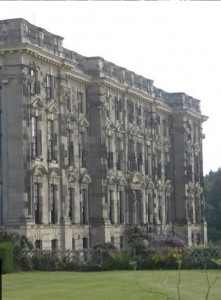
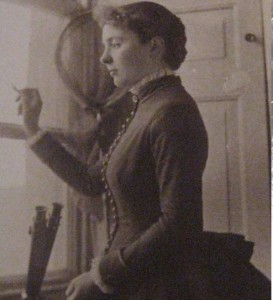
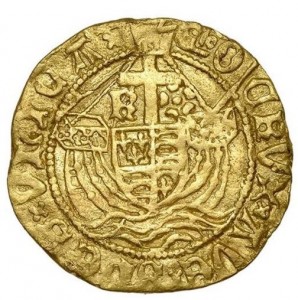
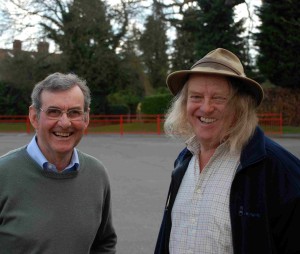
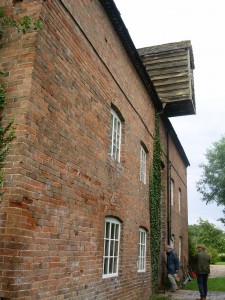
 Anne Langley is a noted local historian who has spoken to us most recently about Joseph Ashby of Tysoe and previously about Victorian Village Life. I hope to see you at the meeting.
Anne Langley is a noted local historian who has spoken to us most recently about Joseph Ashby of Tysoe and previously about Victorian Village Life. I hope to see you at the meeting.
 CHRISTMAS NEWSLETTER10th December 2017
CHRISTMAS NEWSLETTER10th December 2017
